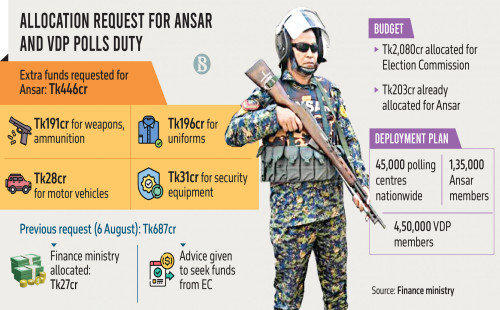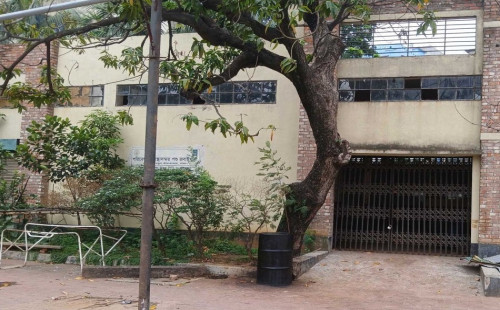Strategic education policy is key to a job-ready Bangladesh

Bangladesh's higher education sector was once envisioned
as a driver of socio-economic progress, but it now faces a troubling paradox:
producing too many graduates in certain fields while leaving critical shortages
in others. At the core of this dilemma is the absence of a centralised
strategic policy, which is required to guide educational institutions on how
many graduates to prepare across various specialised disciplines.
The consequences
of this imbalance are increasingly evident. In 2022, nearly eight lakh
university graduates in Bangladesh remained unemployed, resulting in an
unemployment rate of about 12 percent (tertiary)—significantly higher than the
national average of approximately 3.5 percent. This widening gap between
graduate supply and actual market demand adversely affects individuals and
subsequently constrains overall economic growth.
A prominent example of this problem lies in the field of
computer science and engineering (CSE). Every year, universities produce
approximately 12,000 CSE graduates, while only 5,000 jobs are available. Why do
we keep producing more of what we cannot accommodate? More concerningly,
employers consistently highlight severe skill gaps, reporting that a
significant rate of IT/CSE graduates fail basic competency assessments in
crucial areas, such as coding, mathematics and English. This oversupply,
coupled with skill mismatches, causes personal hardship for thousands of young
graduates, while also diminishing national productivity and competitiveness.
Conversely,
significant shortages persist in some other disciplines, particularly in
healthcare. Despite graduating large numbers of medical professionals annually,
the country still struggles with a pronounced deficit of qualified healthcare
workers. We may have more doctors on paper, but rural clinics often go days
without one. According to a BMC Human Resources for Health study, the density
of doctors, nurses and midwives in Bangladesh was only 9.9 per 10,000
population, well below the indicative sustainable development goals index
threshold, underscoring an urgent need for targeted policy interventions.
Students and
guardians naturally gravitate towards subjects and career paths perceived to
offer the highest immediate market demand and financial security. This
preference leads to mass production of graduates in specific disciplines,
saturating the job market and significantly reducing employment opportunities
for freshers. The University Grants Commission (UGC) introduced a unique
student ID system for private universities to regulate student intake,
significantly capping the number of students per semester. Yet, challenges
remain as universities continue to offer numerous, closely related programmes
within the same domain.
Without accurate
market forecasts, we would only build skills that lead nowhere. To bridge this
gap, we must adopt a systematic, data-driven approach. Comprehensive
labour-market analyses should be conducted regularly to forecast workforce
requirements, clearly identifying existing skill gaps and areas of oversupply.
This process would enable policymakers, educational institutions and industry
stakeholders to adapt proactively to changing market dynamics, creating an
agile and responsive educational environment.
Strong
collaboration among industries, academic institutions and policymakers is
equally critical. Establishing advisory committees composed of these
stakeholders would facilitate continuous dialogue and rapid decision-making.
Additionally, dynamic educational programmes should be promoted, with
institutions incentivised to consistently review and realign their curricula
based on reliable employment data. This strategic collaboration would
significantly enhance the responsiveness and relevance of educational
offerings.
For example, the
Jobs and Skills Australia (JSA), established in 2022, aligns education with the
workforce. Replacing the former National Skills Commission, JSA systematically
forecasts labour-market demands and identifies skill gaps to guide policymakers
and educational institutions. Through its annual Occupation Shortage List
(formerly the Skills Priority List), JSA ensures curricula remain agile and
relevant. Apart from tracking job trends, it also tells universities exactly
what to train for.
Singapore
anticipated this challenge with SkillsFuture, its national initiative to track
labour trends and build future-ready skills. Its annual Skills Demand for the
Future Economy (SDFE) report identifies high-growth job roles and emerging
skills across sectors such as digital services, green industries and the care
economy. The 2025 edition introduced interactive dashboards, offering
real-time, publicly accessible insights to help educators, students, and job
seekers make informed decisions based on evolving industry demands.
Bangladesh is
not without efforts in workforce planning. The establishment of the National
Skills Development Authority (NSDA) is a significant step. It coordinates
skills development across ministries and sectors, following the National Action
Plan (2022-2027) to align training with workforce needs in areas like ICT,
healthcare, construction and RMG. To enhance its impact, NSDA must strengthen
collaboration with universities and industries through sector-specific
councils, shared labour data and co-developed curricula. This would better
align education with market needs and produce a more job-ready workforce.
We stand at a
pivotal moment where our education system must evolve—from prioritising
quantity to ensuring quality, from chasing trends to embracing future-focused
planning. The imbalance between oversupplied graduates and underserved sectors
is not inevitable; it is a solvable challenge with coordinated, data-driven
action. With the right strategies, Bangladesh can transform its vast human
capital into a dynamic, future-ready workforce.
Md Rakib Hasan is director of IT (additional
charge) at Southeast University. He can be reached at
engr.hasannayan@gmail.com.
















